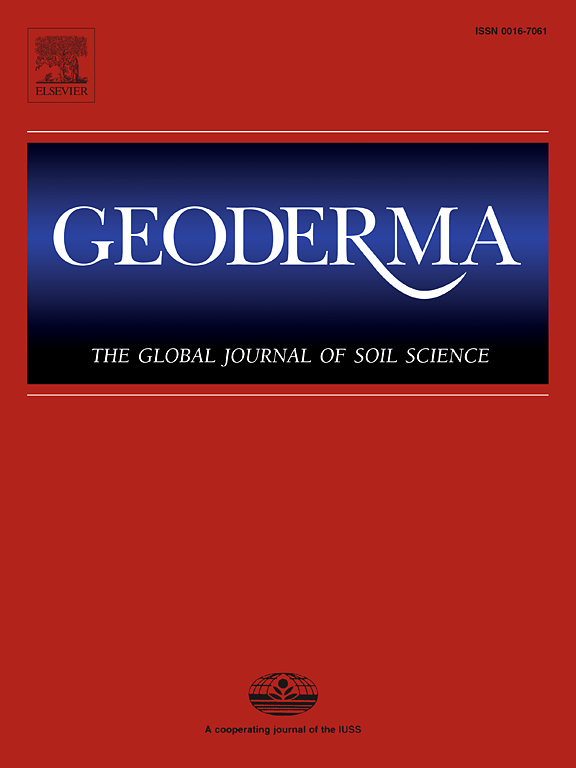空间、深度和时间上的高分辨率土壤温度和土壤湿度模式:可解释的机器学习建模方法
IF 5.6
1区 农林科学
Q1 SOIL SCIENCE
引用次数: 0
摘要
土壤温度和土壤湿度是各种土壤生态过程的关键驱动因素,这意味着包括它们在空间、深度和时间(4D)上的变化在内的数据集非常重要。目前的网格产品通常在空间或时间上分辨率较低。在这里,我们的目标是在异质地貌中为 400 平方公里的研究区域建立高分辨率土壤温度和土壤湿度模式的 4D 模型并对其进行解释。我们的目标分辨率为空间 10 米、深度 10 厘米、时间 1 小时,可捕捉小尺度变化和短期动态。我们使用了来自 212 个地点的多深度土壤温度和土壤湿度测量数据,并将它们与 45 个潜在预测因子联系起来,这些预测因子代表了气象条件、土壤参数、植被覆盖率和地形起伏。我们训练了随机森林模型,其预测土壤温度的平均绝对误差为 0.93 °C,预测土壤水分的平均绝对误差为 4.64 % 体积含水量。连续的模型预测能够对 4D 模式进行全面分析,并证实所选分辨率对于捕捉景观尺度上的土壤温度和土壤水分变化至关重要。除了明显的年周期和对昼夜周期的可识别影响外,土地利用和地貌模式之间也存在显著差异,这些差异也沿深度梯度变化。通过应用可解释的机器学习技术,我们研究了所有驱动因素的详细影响,并讨论了导致预测模式的重叠效应。本文章由计算机程序翻译,如有差异,请以英文原文为准。
High-resolution soil temperature and soil moisture patterns in space, depth and time: An interpretable machine learning modelling approach
Soil temperature and soil moisture are key drivers of various soil ecological processes, which implies a significant importance of datasets including their variations in space, depth and time (4D). Current gridded products typically have a low resolution, either spatially or temporally. Here, we aim at modelling and explaining high-resolution soil temperature and soil moisture patterns in 4D for a 400 km study area in a heterogeneous landscape. Our target resolution of 10 m in space, 10 cm in depth, and 1 h in time allows capturing small-scale variations as well as short-term dynamics. We used multi-depth soil temperature and soil moisture measurements from 212 locations and linked them to 45 potential predictors, representing meteorological conditions, soil parameters, vegetation coverage, and landscape relief. We trained random forest models that were able to predict soil temperature with a mean absolute error of 0.93 °C and soil moisture with a mean absolute error of 4.64 % volumetric water content. Continuous model predictions enabled a comprehensive analysis of 4D patterns and confirmed that the selected resolution is essential to capture soil temperature and soil moisture variations at the landscape scale. In addition to a strongly pronounced annual cycle and recognisable influences on the diurnal cycle, there were significant differences between the land uses and patterns due to the relief, which also varied along the depth gradient. By applying interpretable machine learning techniques, we investigated the detailed influence of all drivers and discussed overlapping effects that led to the prediction patterns.
求助全文
通过发布文献求助,成功后即可免费获取论文全文。
去求助
来源期刊

Geoderma
农林科学-土壤科学
CiteScore
11.80
自引率
6.60%
发文量
597
审稿时长
58 days
期刊介绍:
Geoderma - the global journal of soil science - welcomes authors, readers and soil research from all parts of the world, encourages worldwide soil studies, and embraces all aspects of soil science and its associated pedagogy. The journal particularly welcomes interdisciplinary work focusing on dynamic soil processes and functions across space and time.
 求助内容:
求助内容: 应助结果提醒方式:
应助结果提醒方式:


